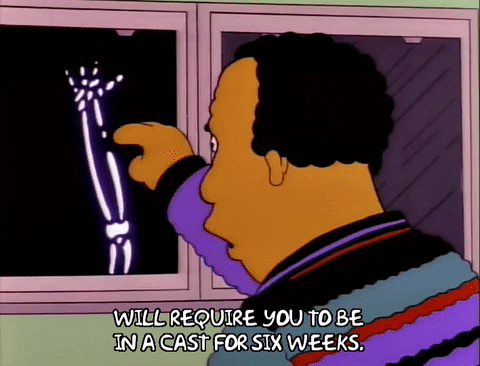

A broken wrist is no joke, and a sprained one is not a pleasant affair either. How can you be sure if a wrist is fractured or sprained? The obvious answer would generally be: go to the doctor. However, in some cases, the nearest medical professional might be too far away, or you would prefer to try and handle the problem yourself.
Is my wrist broken or sprained? Should I see a doctor, or is putting some ice on it enough? Learn how to tell and discover the condition of your wrist with our simple quiz.
Attention! If you suffered an injury to your wrist, or if you feel pain or suspect it might be fractured, consult a physician as soon as possible. If you neglect treatment, your bones may not heal properly, making daily activities difficult in the long run.
You can check your eyesight completely free!
The causes for both wrist fractures and sprains might be similar, like slipping on ice or falling from a bike. How can you tell the two apart? How do you answer the question: is my wrist broken or sprained? Is there swelling, redness, pain, or deformation? First, let’s get an overview of wrist fractures and sprains, their definition, causes, symptoms, diagnosis, and treatment.
A broken wrist means a split or damage in the wrist bones. Eight small carpal bones connect the wrist to two long bones in the lower arm.
There are many things that can result in a fractured wrist, including falls, sports injuries, and accidents involving motor vehicles. Some people are more at risk of breaking a wrist than others. Certain activities like snowboarding, football, horse riding, or jumping on a trampoline might increase your chance of fracture.
Sports injury might result in a concussion. Do you think you might have it?
Is my wrist broken or sprained? It’s easier to tell if a wrist is fractured when there is an obvious deformity or an open fracture (a bone that gets forced out through the skin). However, it doesn’t always happen like that. Here are the symptoms of a broken wrist:
You don’t have to experience all these symptoms with a fractured wrist. The more severe your symptoms become, the better likelihood of a broken bone.
Find out if you’re pregnant without a doctor.
Wrist sprains are injuries occurring when the ligaments – tissue parts connecting bones at joints – in your wrist stretch or tear. A wrist sprain might happen due to a fall, a sudden twisting motion, heavy impact, or putting a wrist in an unnatural position.
Watch out for these symptoms:
Be wary of warning signs of diabetes.
Some people mistakenly believe that if you can move your wrist, it means it’s not broken. That’s not entirely true. Difficulty in moving the wrist may be a symptom of a fracture. Not all people will experience that symptom, however. Your wrist might be broken even if you can move your hand.
A sprained wrist can be hard to manipulate and might hurt if you attempt to do so. Still, you will be able to do it even if it is painful.
A physical exam and X-ray imaging are sure ways to diagnose a broken wrist. Your physician will assess your wrist to determine how it moves and where the pain is. They will also perform an X-ray to find out any potential fractures or tears. Only a consultation with a doctor can answer the question: is my wrist broken or sprained?
For a fractured wrist, you will require a splint or a cast and sometimes even surgery. Following surgery, you might need to work with a hand therapist to help you recover wrist function.
What do you know about multiple sclerosis?
Is my wrist broken or sprained? If it’s sprained, the treatment usually doesn’t require invasive procedures. Applying ice to the wrist and a wrap with a compression bandage should be sufficient for a mild sprain. Sometimes the injury is complicated enough that you will need a splint or a brace. A severe wrist spraining might require surgery.
Is my wrist broken or sprained? We’re not surgeons, but we can assess your symptoms and give you an answer! Still, better to consult a specialist anyway.